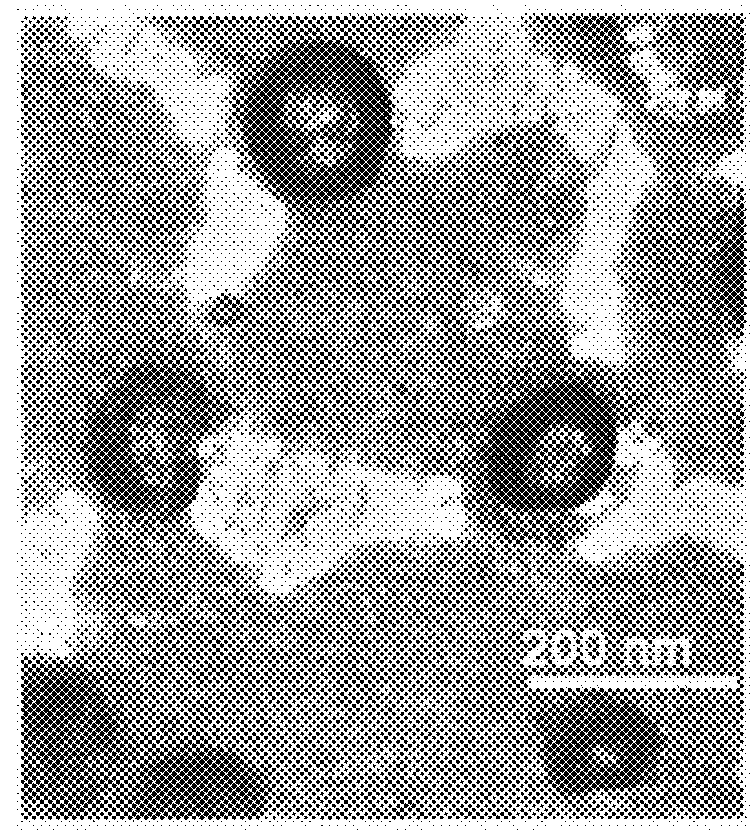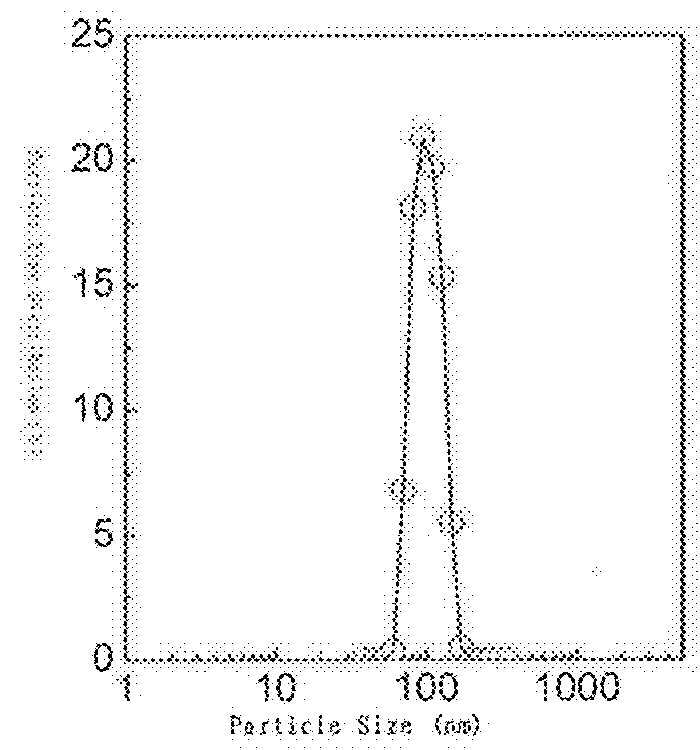Use of a magnetic material in removal of stones
a magnetic material and stone technology, applied in the field of use of magnetic materials in the removal of stones, can solve the problems of affecting the removal effect, and reducing the removal effect of urinary stones, so as to achieve the effect of safe and efficient removal of urinary stones
- Summary
- Abstract
- Description
- Claims
- Application Information
AI Technical Summary
Benefits of technology
Problems solved by technology
Method used
Image
Examples
example 2
Hydrophobic Polystyrene Surface Modification
[0152](Modification on the Magnetic Nanoparticle Core (MnFe2O4) Obtained in Example 1)
[0153]MnFe2O4 nanoparticles with an average particle size of 9 nm were added to an aqueous solution / 3-chloropropionic acid solution with a concentration of 1.0 mol / L initiator, the solution was adjusted to pH of 4 with hydrochloric acid, and stirred overnight. The nanoparticles were collected with a magnet, washed with water for several times to remove excess 3-chloropropionic acid. 0.22 g of dried nanoparticles were added to 8 mL of polystyrene solution under continuous feeding of nitrogen gas, followed by the addition of 4 mL of an xylene solution of 0.3 mmol of CuCl and 1.1 mmol of 4,4′-dinonyl-2.2-dipyridine. The above mixture reacted at 130° C. for 24 h under continuous agitation. The nanoparticles were collected with a magnet and washed repeatedly with toluene to obtain polystyrene-coated magnetic iron oxide nanoparticles.
example 3
Hydrophilic Polyacrylic Acid Modification
[0154]1 g of Fe3O4 obtained in Example 1 (for example, 10 nm Fe3O4 obtained by co-precipitation method) and 5 ml of a silane coupling agent (methacryloxypropyltrimethoxysilane, KH570) were mixed with 50 ml of xylene in a reaction flask. Under nitrogen protection, the reaction was carried out under stirring at 80° C. for 3 hours. After the reaction, the mixture was centrifuged and washed with ethanol three times to remove the silane coupling agent adsorbed on the surface of the Fe3O4 and vacuum-dried for 12 hours. The above-mentioned silane coupling agent-activated Fe3O4, 40 mg of potassium persulfate and 30 ml of deionized water were added in a flask, reacted under nitrogen protection and stirring at 40 for 10 minutes. Then, 4 ml of acrylic acid was slowly dropped into the flask, and reacted under nitrogen protection and stirring at 40° C. for 1 hour. The nanoparticles were magnetically separated, washed three times with deionized water and f...
example 4
Photosensitive Functional Modification of Nanoparticles
[0155]1. Synthesis of Photosensitive Functional Monomer
[0156]The synthesis method of photosensitive monomer with photo-crosslinking characteristics comprised: 4-vinylbenzophenone (4 VBP) and styrene monomer were directly polymerized by atom transfer radical polymerization (ATRP) to obtain a photosensitive polystyrene-polyvinylbenzophenone copolymer (PS-PVBP), wherein the specific steps were as follows: in a dry Schlenk tube connected with a reflux condenser, Cu(I)Br (0.695 mg, 4.8 umol), 4 VBP (1.0 g, 4.8 mmol), styrene (2 u, 20 umol) and 4-vinylbenzophenone (1 μL, 4.8 umol) were added, and the mixture was degassed for three times by means of freeze-pump-thaw circulation. Methyl bromopropionate (5.35 μL, 48 umol) was added to the above mixture at −78° C. under condition of nitrogen with positive pressure, and the mixture was degassed again for three more times by means of freeze-pump-thaw circulation. Polymerization was carried ...
PUM
| Property | Measurement | Unit |
|---|---|---|
| diameter | aaaaa | aaaaa |
| temperature | aaaaa | aaaaa |
| temperature | aaaaa | aaaaa |
Abstract
Description
Claims
Application Information
 Login to View More
Login to View More - R&D
- Intellectual Property
- Life Sciences
- Materials
- Tech Scout
- Unparalleled Data Quality
- Higher Quality Content
- 60% Fewer Hallucinations
Browse by: Latest US Patents, China's latest patents, Technical Efficacy Thesaurus, Application Domain, Technology Topic, Popular Technical Reports.
© 2025 PatSnap. All rights reserved.Legal|Privacy policy|Modern Slavery Act Transparency Statement|Sitemap|About US| Contact US: help@patsnap.com



